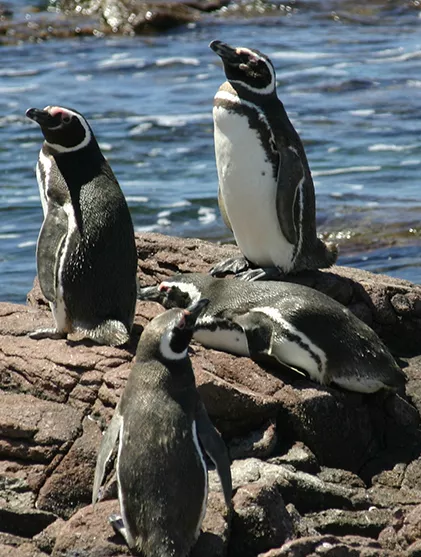Why Warm-Blooded Mammals and Birds Thrive in Colder Seas and the Possible Impact of Global Warming

Even though diversity typically decreases from the tropics to the poles, in the frigid waters of the high latitudes, warm-blooded marine mammals and birds thrive, both in number and species richness. A recent study published in Science by a team of researchers including Assistant Professor of Biology Sydne Record tries to answer why.
The lead author of the study is John Grady, who is now a post-doctoral researcher at The National Great Rivers Research and Educational Center after spending two years as a postdoctoral fellow in Record’s lab, with co-mentoring by Record’s colleague Phoebe Zarnetske (Michigan State University).
Grady succinctly sums up the reason for the findings, by explaining that overall, warm-blooded predators are favored where prey are “slow, stupid and cold.” They have a metabolic advantage when it comes to hunting prey in these conditions—becoming faster than their cold-blooded counterparts as water temperatures decrease. Their metabolism allows them to generate heat to elevate temperatures in the eyes and brain in some cases, to improve sensory abilities as they hunt.
According to Record, one implication of the research is that as oceans warm due to climate change, the balance of power in these regions will shift toward sharks and fish, and mammal and bird populations will dwindle.
Most of the planet’s biodiversity is concentrated near the tropics and forms a well-documented latitudinal gradient of increasing diversity toward the equator. This diversity gradient is a pattern widely observed in nearly every form of animal, plant, and insect life on the land and in the oceans.
However, for marine mammals and birds, the polar opposite is true. The tropics are home to very few warm-blooded mammals and bird species, like seals, whales and penguins, and only dolphins show high diversity in the warmer waters of tropical seas, according to the authors.
In doing their research, the group compiled a distributional database of 998 top marine predators, including whales, sharks, fishes, seabirds, and reptiles, which revealed striking differences in the biogeography of both warm- (endothermic) and cold-blooded (ectothermic) predators.
They then modeled predation rates, metabolism and water temperature among these species to make their conclusions.
Media Coverage
As Polar Seas Heat Up, Mammals Will Find Less Slow, Stupid Prey ~ Reuters
Why Whales, Seals, and Penguins Like Their Food Cold ~ The Atlantic